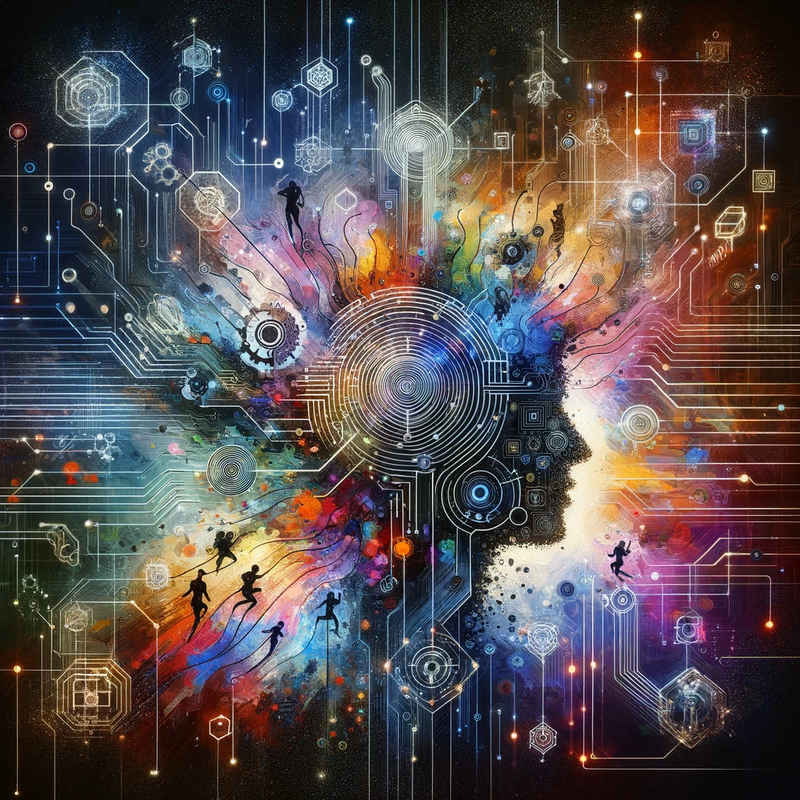How to Deal with AI as a Product Team
The cross-functional product team is the most effective and efficient unit for delivering digital products. How does the new world of generative AI impact the product team? Read on to find out.
4 min read
·
By Runar Ovesen Hjerpbakk
·
December 14, 2023

AI as a Team Member
Cross-functional product teams bring together professionals with diverse skill sets such as engineering, design, product management, and data science. This amalgamation of skills fosters a holistic approach to product development, encouraging innovative solutions and faster problem-solving.
Generative AI, like Large Language Models (LLMs), has exploded in both use and usefulness this past year. Tools such as GitHub Copilot and ChatGPT, with the ability to create content, solve complex problems, and automate tasks, are set to revolutionize how our teams operate. From designing user interfaces to predicting market trends, generative AI tools are not just assistants but active contributors in the creative process—a shift allowing for less busywork, as routine tasks can be completed more efficiently with AI help.
Generative AI can significantly enhance creativity within product teams. For example, AI-driven design tools can generate multiple design options, enabling designers to explore creative avenues they might not have considered. Similarly, AI-powered data analysis can unveil insights that drive more informed decision-making.
Despite its benefits, integrating generative AI into cross-functional teams is not without challenges. Teams must navigate issues related to data privacy, ethical AI use, and maintaining a balance between human creativity and AI efficiency.
As generative AI continues to evolve, its impact on cross-functional product teams will only grow. Teams that effectively integrate these technologies will find themselves at the forefront of innovation in digital product development.
AI can do the thunking; humans can do the thinking. Increase your productivity, automate more advanced menial tasks, and use the freed-up time to improve yourself, your team, and your product.
AI as a Product Feature
Users' experiences with AI-enhanced products like Lightroom, Notion, or even Snapchat put new pressure on teams wanting to deliver top-notch UX experiences. But for most teams, simply putting an LLM in the front end and calling it a day is not enough. Even though access to AI is only an API call away, they excel at giving plausible examples, not necessarily the correct answer to user requests.
So don't just embed GPT and pine for the fjords. Understand your user's jobs to be done and use AI to actually improve their experiences with your product. Today's tools are good at summarizing qualitative information, understanding user input, and generating funny images and avatars. But what is unique about the experience of your product in the context of your user base?
Find an answer to that question, either as a golden use case enabling new features that confer a long-term advantage, or improve your table stakes features to enhance your users' efficiency within your product. Iteration, as always, is key, so move fast, run experiments, and understand the effects these have on your users.
If your company has an AI strategy (as it should), use that to guide you. If not, this simple hierarchy of steps might be useful:
- Experiment with LLM in the surface of your product. Where can it easily provide user value? These are your low-hanging fruits.
- Automate workflows. Make experiences faster, summarize, and simplify.
- Replace workflows. Redesign using the new tools, enabling new workflows while removing others.
- Just do the customer's work outright.
Learn as you go along, and don't forget about the fundamentals of digital product development. Focus on your users' pain points and your golden use cases. And, if you're good, leverage first-party data as your moat.
Summary
To summarize, in the hands of a skilled team, AI tools can be huge productivity boosters, and the time for experimenting with them is now! Generative AI is to products as salt is to food. Every dish needs some, but additional spice is most of the time needed (except for in traditional Norwegian cuisine).